Full Mouth Restoration with T-Scan Occlusal Data
Function and aesthetics rely on a balanced, harmonious occlusion. Unless you’re able to measure occlusion and identify it as the cause of cosmetic dental work failures, you may waste precious time and resources hunting for other clues. T-Scan is a digital occlusal analysis system that removes the mystery, revealing the truth behind how teeth are coming together by measuring the force and timing of the bite.
As part of our Cosmetic Dentistry eBook, Dr. Ben Sutter shares a specific case where occlusal factors were causing serious issues like loose teeth, abfractions, and fremitus. Here’s a sneak peek at how Dr. Sutter used T-Scan occlusal data to help him analyze and treat this patient’s issues:
Patient Background/Assessment:
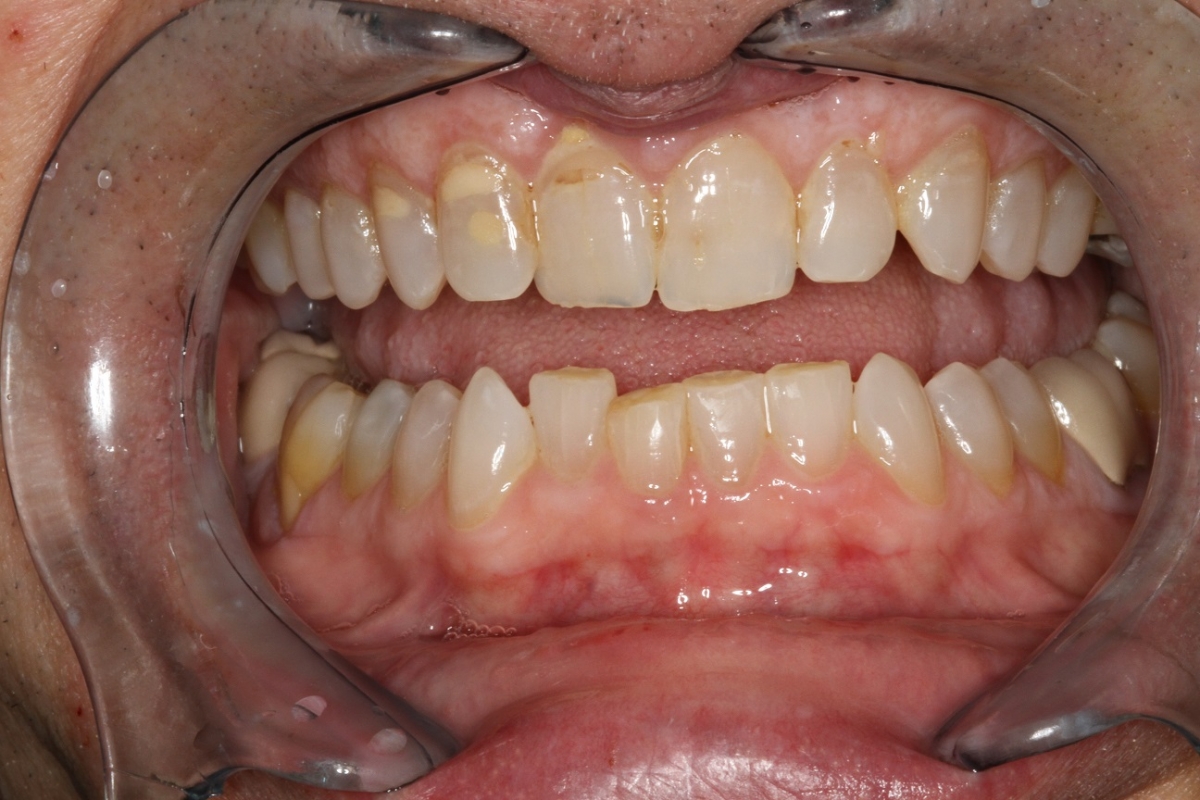
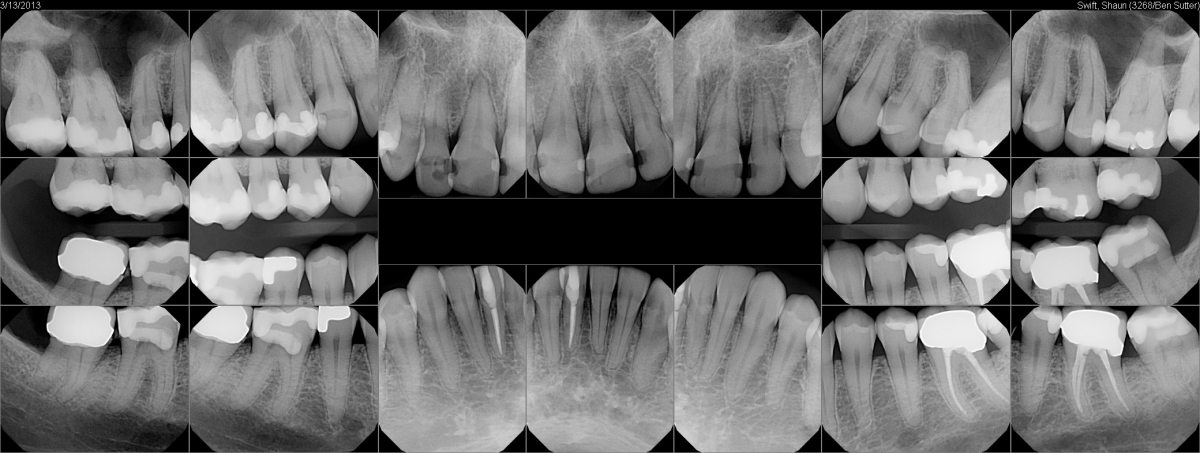
The patient is a 61 year-old male. His front four teeth are loose and the opposing teeth have serious wear. He has abfractions on several teeth, some that have been previously repaired, but some of the patches are showing signs of wear. He also shows bone loss on one tooth. X-rays showed elastic tissue around the front four teeth, indicating fremitus, while the opposing bottom teeth were solid.
Treatment Plan:
Taking no action could eventually lead to losing teeth. A full mouth restoration was chosen as the course of action rather than braces.
Actions:
Multi-bite scans were taken using T-Scan, showing a significant asymmetry—76% of force on the left side vs. 34% on the right.
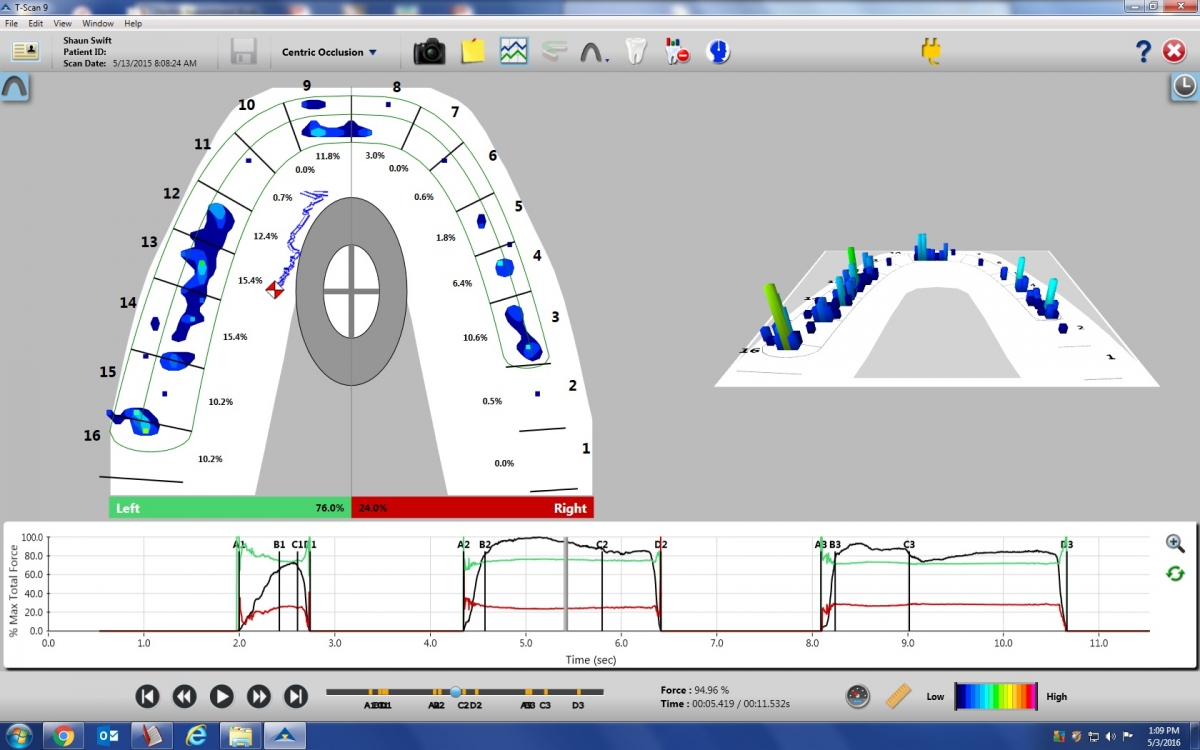
A removable appliance was built to keep the front teeth out of contact with the opposing teeth, transferring the force to posterior teeth. The top teeth were then replaced with porcelain, and an orthotic was fixed to the lower teeth while the top teeth healed. Later, the lower arch was restored with porcelain.
Results:
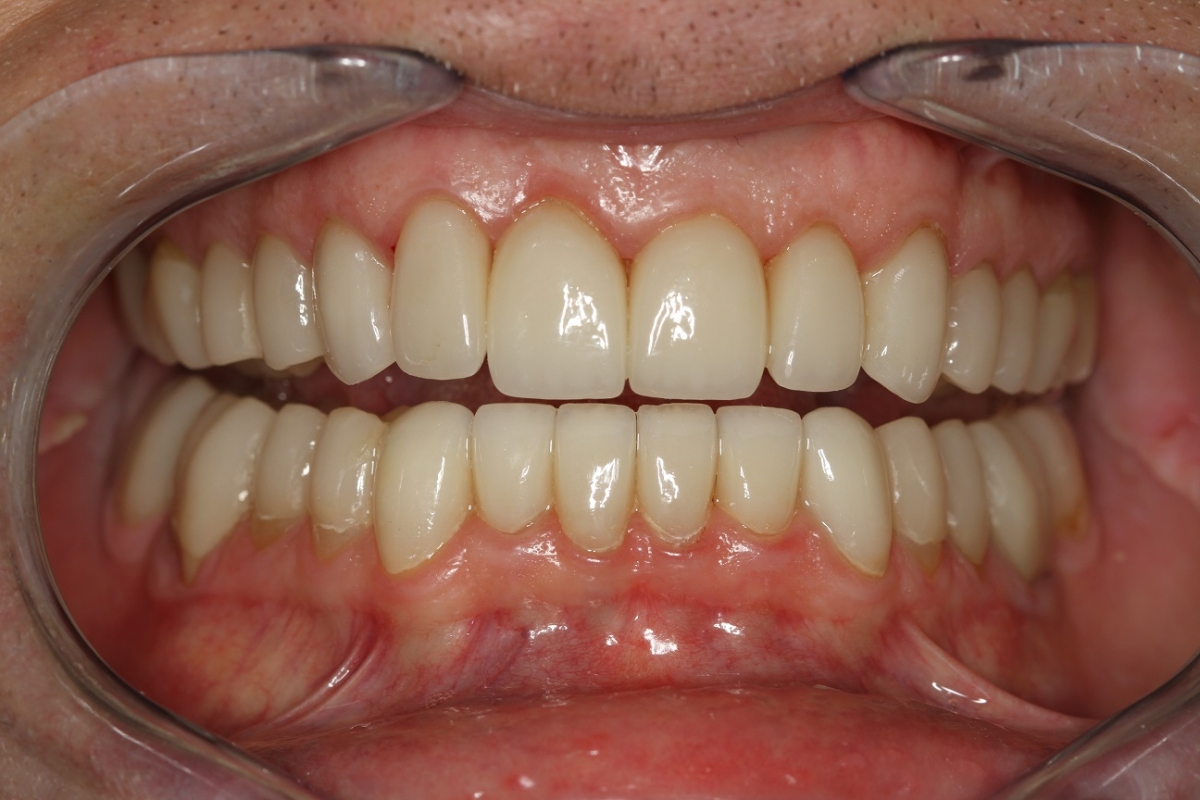
The end result is an aesthetically improved smile, and a functional bite. The patient reported no issues, but T-Scan was used again to evaluate the effectiveness of the treatment using occlusal data.
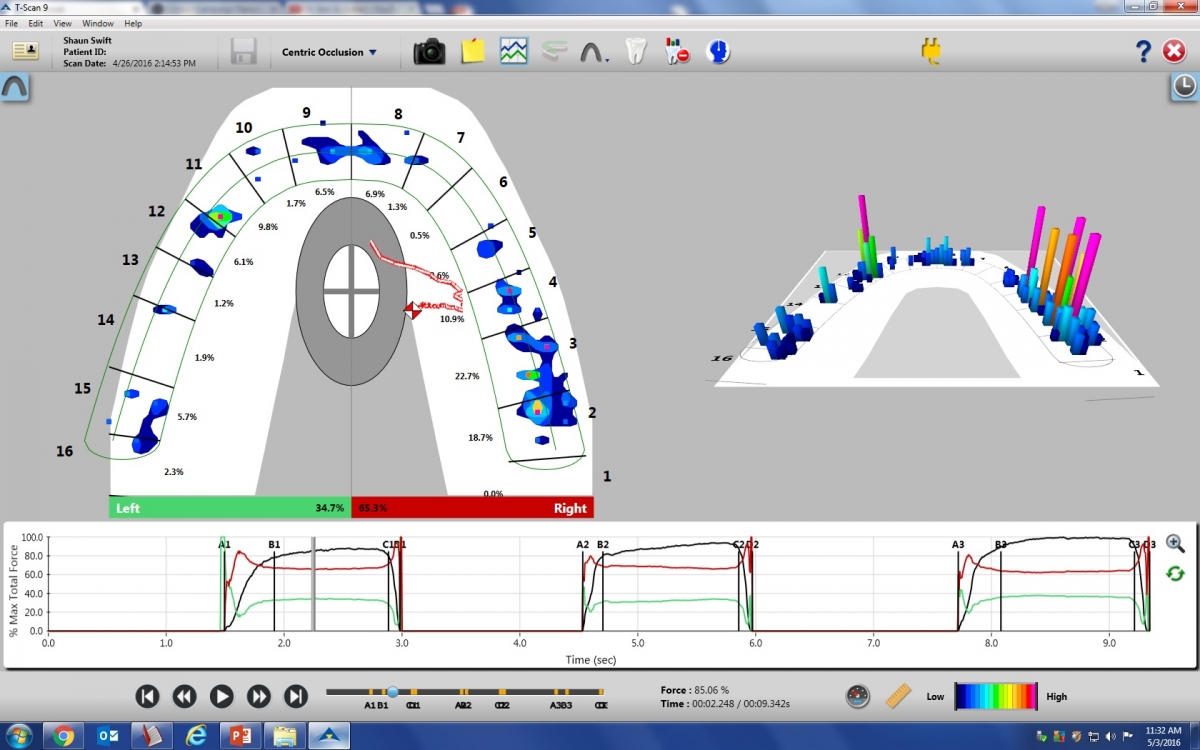
The first scan showed an asymmetry favoring the right side.
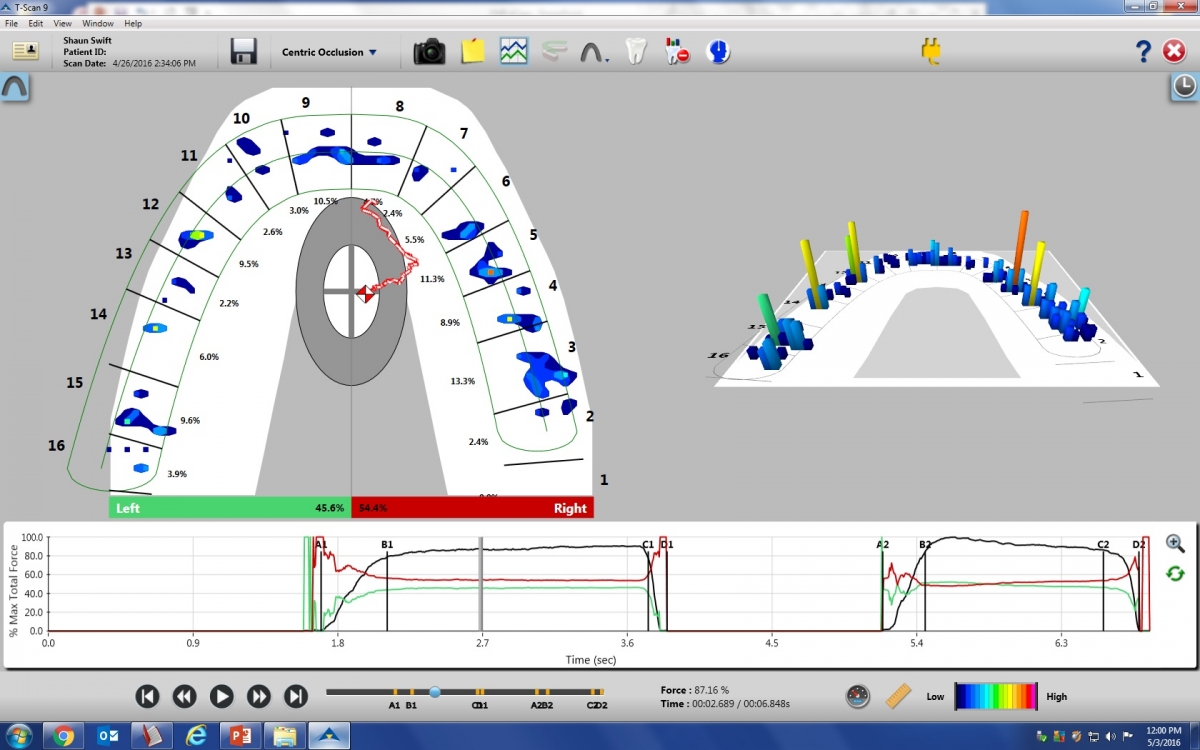
After an additional adjustment, balance was restored.
Download the full eBook for more details about Dr. Sutter’s treatment, as well as cases from Dr. Robert Kerstein and Dr. Hoon Kim—all of which highlight how T-Scan occlusal data can enhance the outcomes of cosmetic dentistry procedures.
Previous Post: | Next Post: |
